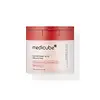What's inside
What's inside
 Key Ingredients
Key Ingredients

 Benefits
Benefits

 Concerns
Concerns

 Ingredients Side-by-side
Ingredients Side-by-side

Hypochlorous Acid
AntiseborrhoeicWater
Skin ConditioningGlycerin
HumectantFructose
HumectantUrea
BufferingPhenoxyethanol
PreservativeCitric Acid
BufferingCamellia Sinensis Leaf Extract
AntimicrobialMaltose
MaskingSodium PCA
HumectantBeta-Glucan
Skin ConditioningSodium Lactate
BufferingTrehalose
HumectantAllantoin
Skin ConditioningSodium Hyaluronate
HumectantGlucose
HumectantEthylhexylglycerin
Skin ConditioningHyaluronic Acid
HumectantHydroxypropyltrimonium Hyaluronate
Sodium Hyaluronate Crosspolymer
HumectantSodium Acetylated Hyaluronate
HumectantHydrolyzed Sodium Hyaluronate
Skin ConditioningHydrolyzed Hyaluronic Acid
HumectantHypochlorous Acid, Water, Glycerin, Fructose, Urea, Phenoxyethanol, Citric Acid, Camellia Sinensis Leaf Extract, Maltose, Sodium PCA, Beta-Glucan, Sodium Lactate, Trehalose, Allantoin, Sodium Hyaluronate, Glucose, Ethylhexylglycerin, Hyaluronic Acid, Hydroxypropyltrimonium Hyaluronate, Sodium Hyaluronate Crosspolymer, Sodium Acetylated Hyaluronate, Hydrolyzed Sodium Hyaluronate, Hydrolyzed Hyaluronic Acid
Water
Skin ConditioningButylene Glycol
HumectantPropanediol
SolventNiacinamide
Smoothing1,2-Hexanediol
Skin ConditioningAlcohol
AntimicrobialPanthenol
Skin ConditioningSuccinic Acid
BufferingGlycerin
HumectantPolyglyceryl-10 Laurate
Skin ConditioningPolyglycerin-3
HumectantTromethamine
BufferingAllantoin
Skin ConditioningSalicylic Acid
MaskingVinyldimethicone
Ethylhexylglycerin
Skin ConditioningCoptis Japonica Root Extract
Skin ConditioningXanthan Gum
EmulsifyingDisodium EDTA
Cyanocobalamin
Skin ConditioningHydrogenated Lecithin
EmulsifyingMentha Piperita Oil
MaskingCitrus Aurantium Bergamia Fruit Oil
MaskingRosmarinus Officinalis Leaf Oil
MaskingProtease
ExfoliatingJuniperus Virginiana Oil
MaskingLavandula Hybrida Oil
EmollientElettaria Cardamomum Seed Extract
PerfumingFoeniculum Vulgare Seed Extract
Skin ConditioningCrocus Sativus Flower Extract
MaskingCoriandrum Sativum Extract
Skin ConditioningTocopherol
AntioxidantWater, Butylene Glycol, Propanediol, Niacinamide, 1,2-Hexanediol, Alcohol, Panthenol, Succinic Acid, Glycerin, Polyglyceryl-10 Laurate, Polyglycerin-3, Tromethamine, Allantoin, Salicylic Acid, Vinyldimethicone, Ethylhexylglycerin, Coptis Japonica Root Extract, Xanthan Gum, Disodium EDTA, Cyanocobalamin, Hydrogenated Lecithin, Mentha Piperita Oil, Citrus Aurantium Bergamia Fruit Oil, Rosmarinus Officinalis Leaf Oil, Protease, Juniperus Virginiana Oil, Lavandula Hybrida Oil, Elettaria Cardamomum Seed Extract, Foeniculum Vulgare Seed Extract, Crocus Sativus Flower Extract, Coriandrum Sativum Extract, Tocopherol
 Reviews
Reviews

Ingredients Explained
These ingredients are found in both products.
Ingredients higher up in an ingredient list are typically present in a larger amount.
Allantoin is a soothing ingredient known for its protective and moisturizingg properties. Because of this, it is often added to products with strong active ingredients.
Studies show higher concentrations of this ingredient can promote wound healing.
Though it can be derived from the comfrey plant, allantoin is produced synthetically for cosmetic products to ensure purity.
Learn more about AllantoinEthylhexylglycerin (we can't pronounce this either) is commonly used as a preservative and skin softener. It is derived from glyceryl.
You might see Ethylhexylglycerin often paired with other preservatives such as phenoxyethanol. Ethylhexylglycerin has been found to increase the effectiveness of these other preservatives.
Glycerin is already naturally found in your skin. It helps moisturize and protect your skin.
A study from 2016 found glycerin to be more effective as a humectant than AHAs and hyaluronic acid.
As a humectant, it helps the skin stay hydrated by pulling moisture to your skin. The low molecular weight of glycerin allows it to pull moisture into the deeper layers of your skin.
Hydrated skin improves your skin barrier; Your skin barrier helps protect against irritants and bacteria.
Glycerin has also been found to have antimicrobial and antiviral properties. Due to these properties, glycerin is often used in wound and burn treatments.
In cosmetics, glycerin is usually derived from plants such as soybean or palm. However, it can also be sourced from animals, such as tallow or animal fat.
This ingredient is organic, colorless, odorless, and non-toxic.
Glycerin is the name for this ingredient in American English. British English uses Glycerol/Glycerine.
Learn more about GlycerinWater. It's the most common cosmetic ingredient of all. You'll usually see it at the top of ingredient lists, meaning that it makes up the largest part of the product.
So why is it so popular? Water most often acts as a solvent - this means that it helps dissolve other ingredients into the formulation.
You'll also recognize water as that liquid we all need to stay alive. If you see this, drink a glass of water. Stay hydrated!
Learn more about Water